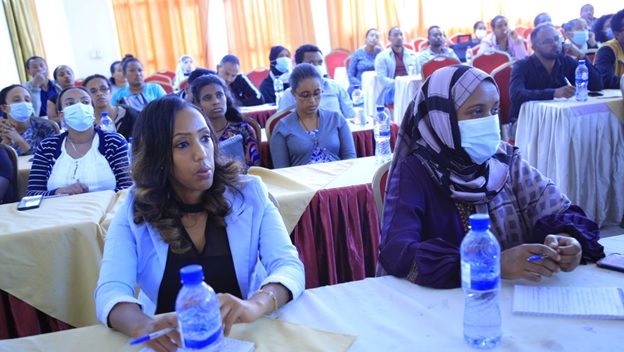
BY MENGISTEAB TESHOME
The World Health Organization (WHO) classifies persons in the age range of 10-19 years as adolescents and those 15-24 years as youth. While the adolescent classification is mostly universal, different continents or nations adopt different age ranges for youth.
The definition of youth is also influenced by the constant changes in demographic, economic, and sociocultural circumstances. For instance, according to the African Youth Charter, youth are people 15 to 35 years. The National Youth Policy of Ethiopia, the other way around, adopts the age of 15-29 years for youth.
This part of society is believed to be the driver of the economy of a nation. Therefore, respective nations and institutions try to frame policies and strategies to enabling the young people to get improved services that could help them realize their full potential and attaining their goals.
As per nation health strategy, efforts are underway to improve the health and wellbeing of this segment of the population, and the government of Ethiopia has been undertaking a number of activities committed to respond to the health needs of the young people.
The Ministry of Health by developing and the first National Adolescent and Youth Reproductive Health Strategy (2006-2015) and implementing it for almost a decade, it has seen significant improvements on the reproductive health of adolescents and youth particularly among women and girls and registered remarkable success and a significant improvement.
The Health Sector Transformation Plan (HSTP I) recognized the vulnerability and risk of sexual and reproductive health of adolescent and youth in Ethiopia; and notify that the lack of access to and utilization of youth friendly services is a challenge. In line with the HSTP, the Ministry developed and disseminated the second National Adolescent and Youth Health Strategy (2016-2020) that commits to addressing adolescents and youth health related matters such as sexual reproductive health, substance use, communicable and non-communicable diseases, nutrition, and injuries.
As part of this effort, of late the Addis Ababa City Administration Health Bureau (AACAHB) staged a panel discussion with respective health institutions targeting to improve the quality of healthcare services to adolescents and youth.
Speaking on the occasion, Addis Ababa Health Bureau Deputy Bureau Head Hangatu Mohammed said that a number of plans have been devised; and several activities are being carried out with the aim to improve the healthcare services of adolescents and youth. However, as to her, to make the effort successful and ensuring the health of adolescents and youth, the collaboration of multi-sectorial organizations-leaderships of respective health bureaus, stakeholders at all level is important. They should join hands and work together with determination.
She went on to note that the industry parks are among the priority intervention areas in ensuring that the youth working there benefitting from the services, mainly, sexual and reproductive health services.
Underscoring that the health services provided to the community by health facilities should be improved now more than ever before, Hangatu said that especially the services offered to youth should be available at all time, around-the-clock. According to her, it is high time to meet the multi-dimensional needs of young people and health centers should open 24/7 to serve these parts of the community.
According to her, efforts are underway in 12 model health centers and the Bureau is working to scale up the good practices gained from there into other health facilities.
There are many reasons for the growing attention to the health of adolescents and youth in Ethiopia. First, this group comprises a significant proportion (33.8 %) of the country’s population. Second, as this cohort joins the workforce, the foundations laid in health will have profound implications for social, political, and economic development of the country.
This is particularly important when due attention to is given to decline the rate of fertility and mortality in Ethiopia.
Third, healthy adolescents are key assets and resources, with great potential to contribute to their families, communities and the nation not only for the present but also for the future being actors in social change, not simply beneficiaries of social programs. Not only that, but the surge of interest in adolescent and youth health also responds to the improved global understanding of the developmental process that takes place during adolescence which guides designing and delivering tailored interventions for subgroups in this segment of the population.
Director of the Maternal and Child Health Directorate Sindu Mekuria with the Bureau for her part noted that young people should get services at proximity with skilled health professionals. She also stated that the necessary training, and support and monitoring activity is being offered for those professionals who are providing health services to adolescents and young adults. Concurrently, monitoring and follow-up activities are undertaken.
The Bureau is working to upgrade the skills and knowledge of health professionals, in this regard training is underway to address the gaps, she reiterated.
She also stressed the importance of the strategy to systematically address the needs of young people in a coordinated manner, engaging young people and other stakeholders. The program is mainly delivered at schools, youth centers, and health institutions in coordination with pertinent stakeholders.
In a bid to improve the health services provided to adolescents and youth, 14 service packages have become operational in all health facilities. Among others providing the necessary information regarding integrated reproductive health services, carrying out awareness raising activities to reduce the rate of unplanned pregnancy, providing HIV counseling and testing service, increasing the use of family planning services are few.
In the panel discussion, research findings were presented to participants regarding to performance of adolescent and youth health services and the challenges on the ground.
Photo – AACAHB
The Ethiopian Herald 11 December 2022





